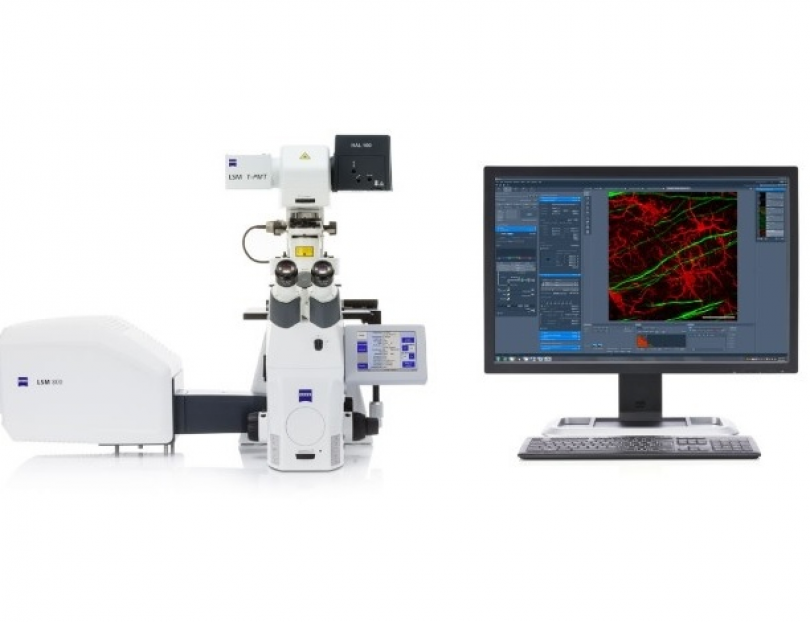Common Applications
| Confocal: | Confocal imaging is a fluorescence microscopy technique that optically sections the specimen, preventing ‘out of focus’ light from reaching the detector. This yields clear and high contrast images, and together with the ability to acquire images sequentially at multiple positions, the entire sample can be reconstructed in 3D. |
| Spectral Unmixing: |
Conventionally, imaging multiple fluorophores of the same sample requires careful selection to ensure crosstalk and/or bleedthrough do not lead to confusion between the signals. This can greatly restrict the number of probes available to you. Spectral unmixing is a technique that uses information about the spectral profile of each fluorophore to mathematically separate the overlapping signals. |
| Colocalisation: |
Light microscopy lends itself very well to labelling multiple structures within a sample due to the ability to separate these spatially overlapping signals by the wavelength of light they emit. Colocalisation is the study of how the distribution of one probe relates to another within the same sample. |
| Enhanced resolution (Airyscan): |
The Airyscan detector consists of a hexagonal array of 32 GaAsP/PMT detector elements that have the light collection efficiency of a 1.25 AU pinhole (up to 50% more light collected than with a 1 AU pinhole). Each detector element functions similarly to a single, small (0.2 AU) pinhole, which enables the generation of higher (1.7 x) resolution images with improved signal-to-noise ratio than a standard confocal. The Fast mode can be used to increase acquisition speed to up to 13 fps by elongating the excitation beam to acquire 4 lines of image at once, without sacrificing resolution or signal-to-noise. |
| Short term live cell culture: | Live cells can be imaged in an automated manner using the Experiment Designer software tool, combined with three parallel spectral channels. The motility of subcellular structures can be studied using Airyscan GaAsP detector to image with time lapse imaging in 2D or 3D at 1.6 frames per second |







